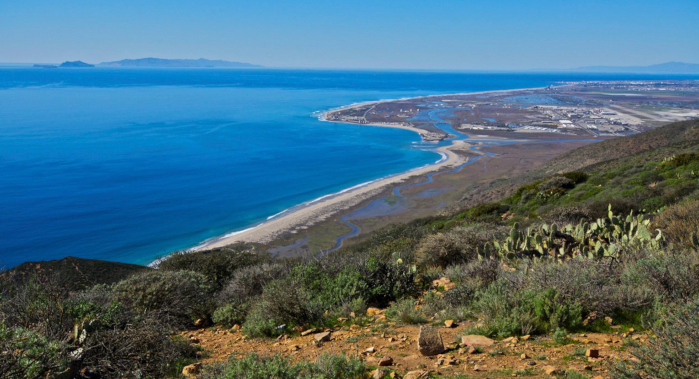Systematic, science-based conservation planning is a hallmark of the Conservancy. For biodiversity to thrive, habitats need to be protected, enhanced, or restored not just in the still wild places on the planet but also where people live and make their livelihoods.
Multi-disciplinary planning can help elucidate where the highest priority places are and what needs to happen there – and inform tradeoffs between conservation and other societal values.


Kristen E. Dybala, Neil Clipperton, Thomas Gardali, Gregory H. Golet, Rodd Kelsey, Stefan Lorenzato, Ron Melcer, Jr., Nathaniel E. Seavy, Joseph G. Silveira
The Conservancy and partners are working to establish riparian ecosystems that provide sufficient habitat to support genetically robust, self-sustaining, and resilient bird populations in…Kristen E. Dybala, Neil Clipperton, Thomas Gardali, Gregory H. Golet, Rodd Kelsey, Stefan Lorenzato, Ronald Melcer, Jr., Nathaniel Seavy, Joseph G. Silveira, Gregory S. Yarris
Quantitative population objectives are necessary to achieve conservation goals of secure or robust wildlife populations, however, existing methods for setting them often require extensive…Kristen Wilson, Erik Lowe, Stacey Wolny, Barry Nickel , Rodd Kelsey
This study demonstrates how science-based planning with stakeholder input can improve and direct conservation investments across existing state and jurisdictional boundaries. The authors set out to…Burns, C.E., A. Hoss, N. Smith, K. Klausmeyer, K. Fesenmeyer, A. Campbell, J. Carah, E. Forsburg, S. Heard, J.K. Howard, L. Hulette, S. Liu, P. Spraycar, B. Stranko, G. Werner, D. Wordham
This report identifies a set of strategies that will have the greatest impact on environmental flows, and to provide a resource for conservation organizations, resource agencies, and other…David C. Marvin, Gregory P. Asner
Policies that incentivize forest conservation by monetizing forest carbon ultimately depend on the accuracy of carbon stock estimates. Often, these estimates are based on field inventory sampling. In…A Network for Voluntary Conservation
The Pajaro Compass—with its interactive maps and tools—supports a group of over 50 stakeholders representing conservation, agriculture, transportation, government and community…Tamara S Wilson, Benjamin M Sleeter, D Richard Cameron
This publication discusses how land use changes in Mediterranean California will drive changes in water use between urban uses and annual vs. perennial crops. The authors used a state-and-transition…The Nature Conservancy and Sonoma County Agricultural Preservation and Open Space District
The Climate Action Through Conservation project provides a way for local governments, land managers, and planners to understand the links between climate benefits and conservation values and…Jason Kreitler, Carrie A. Schloss, Oliver Soong, Lee Hannah, Frank W. Davis
In the past, mitigation to address impacts from development have lacked a regional planning perspective resulting in efficient design across a set of sites for a suite of impacts. This paper…Jeanette Howard, Kirk Klausmeyer, Kurt Fesenmyer
The California Freshwater Species Database is the first comprehensive geospatial database of California’s freshwater species compiled and standardized into single format from nearly 500 sources.…Jeanette K. Howard, Kirk R. Klausmeyer, Kurt A. Fesenmyer, Joseph Furnish, Thomas Gardali, Ted Grantham, Jacob V. E. Katz, Sarah Kupferberg, Patrick McIntyre, Peter B. Moyle, Peter R. Ode, Ryan Peek, Rebecca M. Quiñones, Andrew C. Rehn, Nick Santos, Steve Schoenig, Larry Serpa, Jackson D. Shedd, Joe Slusark, Joshua H. Viers, Amber Wright, Scott A. Morrison
The California Freshwater Species Database is the first comprehensive geospatial database of California’s freshwater species compiled and standardized into single format from nearly 500 sources.…